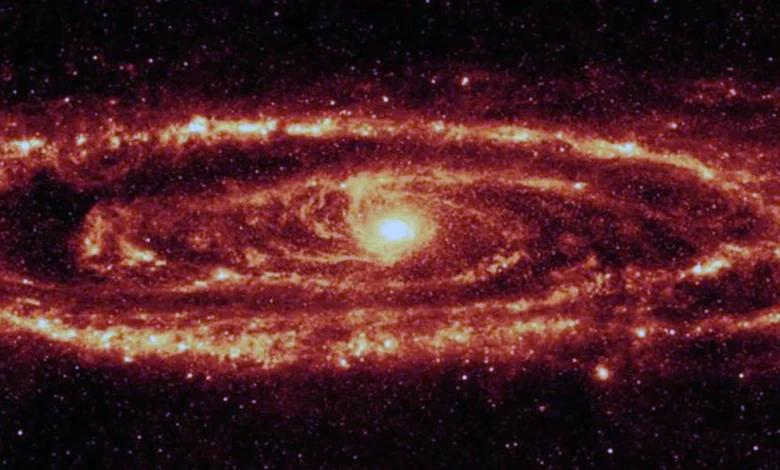Cosmic Collision at 3.2 Million Kilometers Per Hour: A Galactic Spectacle

Cosmic Collision at 3.2 Million Kilometers Per Hour: A Galactic Spectacle
Stephan’s Quintet – A remarkable cosmic event has recently captured the attention of astronomers as two galaxies collided at an astonishing speed of 3.2 million kilometers per hour (approximately 2 million miles per hour). This extraordinary collision occurred within the famous galactic grouping known as Stephan’s Quintet, located about 290 million light-years from Earth.
Galaxies Involved: The primary galaxy involved in this collision is NGC 7318b, which is known for its rapid movement through the region.
Speed: The collision was recorded at a staggering speed of 3.2 million km/h, producing a powerful shock wave that has significant implications for our understanding of galactic interactions.
Impact on Star Formation: The collision is believed to have triggered a burst of star formation, as the gravitational forces and shock waves compress gas and dust, leading to the birth of new stars.
This event is not just a spectacular display of cosmic forces; it also provides valuable insights into the dynamics of galaxy interactions. Astronomers are particularly interested in:
Understanding Galaxy Evolution: The collision helps scientists study how galaxies evolve over time and the role of such high-speed interactions in shaping their structures.
Star Formation Processes: Observations from this event will enhance our knowledge of how collisions can lead to increased star formation rates, which is crucial for understanding the lifecycle of galaxies.
The astronomical community is buzzing with excitement over this discovery. Researchers are planning further observations using advanced telescopes to analyze the aftermath of the collision and gather more data on the processes at play.
As we continue to explore the universe, events like this remind us of the dynamic and ever-changing nature of the cosmos. The collision of NGC 7318b serves as a powerful example of the forces that shape our universe, and it opens new avenues for research into the mysteries of galactic behavior.




